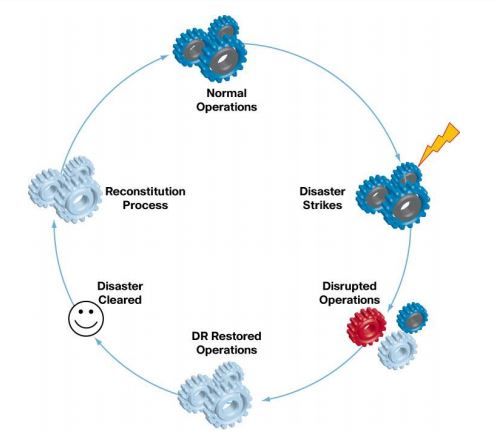DR / BCP Solutions

ITSec Ltd looks at your company from a business perspective to identify critical systems and dependencies. We leverage our expertise to improve the process, allowing the DR/BCP planning effort to meet your set Recovery Time and Recovery Point Objectives (RTO/RPO).
Disaster recovery is part of security planning and is aimed at protecting an organization against the impact of negative occurrences. When a disaster recovery strategy is put in place, it enables an organization to function effectively and resume its activities as quickly as possible.
A disaster recovery strategy follows a process, this involves planning, testing, and sometimes a physical backup site is needed to restore operations. It also involves an emergency communication plan, this is done in a bid to keep staff and all other personnel updated on the happenings in the organization.
What Are The Elements
Of A Disaster Recovery Plan?
A disaster recovery plan varies from one organization to another. Every organization has its compliance requirements as well as expectations. Nevertheless, there is a general outline that every organization’s recovery plan should follow.
A BRIEF OVERVIEW OF OUR CAPABILITIES AND SERVICES
Connecting your business to the technology resources you need
Disasters are inevitable but mostly unpredictable and they vary in type and magnitude. The best strategy is to have some kind of disaster recovery plan in place to return to normal after the disaster has stuck. For an enterprise, a disaster means abrupt disruption of all or part of its business operations, which may directly result in revenue loss. To minimize disaster losses, it is very important to have a good disaster discovery plan for every business subsystem and operation.
Every Business disaster has one or more causes and effects. The causes can be natural, human or mechanical in origin, ranging from events such as tiny hardware or software component’s malfunctioning to universally recognized events such as fire, terrorism, vandalism or flood. Effects of disasters range from small interruptions to total business shutdown for days or months, even fatal damage to the business
Advantages of ITSEC DR
Disaster Recovery Planning
The cost of preparing for and mitigating risk is far less than the cost of attempting to recover from a disaster. An unplanned loss of service can mean lost business, lost customers, lost opportunities, and possibly worst of all, the loss of a valuable asset – data. All of which can be very detrimental to the future of your business. Preparation is the key to success.
Disaster Recovery (DR) planning decisions are made based on several criteria, including perceived cost, perceived risk and the implementation schedule. Our focus is on value. A plan only has value when it works!
To minimize cost, companies will often try achieve this in-house. However, they often find that after several iterations that the DR plan is still incomplete. The true cost of this effort typically far exceeds the
perceived cost.

Disaster Recovery Planning (DRP) is specific to your business, and its special needs. It requires in-depth business and technical expertise, and understanding of what it takes to restore key systems under stress, and the willingness to adapt the plan and requirements – instead of trying to make a generic plan work for you.
What is the solution?
ITSec Ltd will look at your company from a business perspective to identify critical systems an dependencies. We leverage our expertise to improve the process, allowing the DR planning effort to move forward at a faster pace while generating positive results. Our staff will help define recovery time and recovery point objectives while taking into consideration even the most minor details and requirements.
In short, in the end you will have a plan that works and is indeed comprehensive. And just as important, ITSec will customize its service offerings to meet your needs and budget. Realizing that the “perfect plan” is often not financially realistic, ITSec Ltd will define phases that allow for the plan to grow and extend as time and budget permits
Typical steps include:
1. Risk assessment, business impact analysis, and gap analysis;
2. Definition of business and technical requirements and goals;
3. Definition of Service Level Agreements (SLAs);
4. Risk mitigation planning;

5. Disaster Recovery / Business Continuity Plan development;
6. Project planning and management;
7. DRP/BCP execution, refinement, and ongoing maintenance;
8. Management reporting with measurable progress reports
